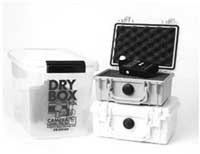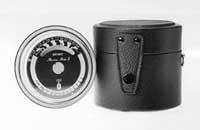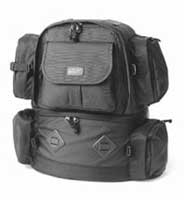Shooting In The Wet
A Primer On Keeping Your Powder Dry
It was the longest mileage
day in a multi-day bike tour of the California Wine Country and the
Mendocino Coast and we had yet to ride a mile when the rain that had
been threatening started to come down. At first, it was just a light
mist and then, as we started up the long climb out of Cloverdale, it
really let loose. Soon it no longer mattered how much it rained as we
were as wet as we could get. Constantly wiping my glasses with a soggy
neckerchief I was thankful that I had my camera securely bundled up
in a waterproof handlebar bag. Or so I thought. |
|||
That escapade happened a
dozen or so years ago and although I have biked, hiked, and kayaked
in inclement weather many times since I've never repeated the
experience. Well, at least I am trainable. I'd also like to help
you learn from my folly. So, here are some of my strategies for keeping
things dry when shooting in wet conditions. |
|||
|
|||
Another piece of equipment
I like when shooting in wet or muddy conditions is the Benbo tripod. It
features a leg design that puts the larger telescoping section on the
bottom. This section is sealed from the elements so it can be submerged
to a depth of a foot or more, depending on the model, and the muck stays
out. Supplies Needed Laird Rain Hood, Laird Tri-pads, and Photographer's ground cloth; Hakuba cases and backpacks, Velbon tripods, dry boxes, desiccants, and lots of other nifty stuff; Nikonos cameras, flash units, and accessories; Pelican waterproof equipment cases; EWA Marine Housings, Epoque ET100+ camera, Graf Studioballs, and Culmann tripods from R.T.S.; Benbo tripods, Domke Outpack cases, backpacks, and Dri-Safe from Saunders. Manufacturers/Distributors A. Laird Photo Hakuba USA, Inc. Pelican Products R.T.S. Inc. The Saunders Group |





































